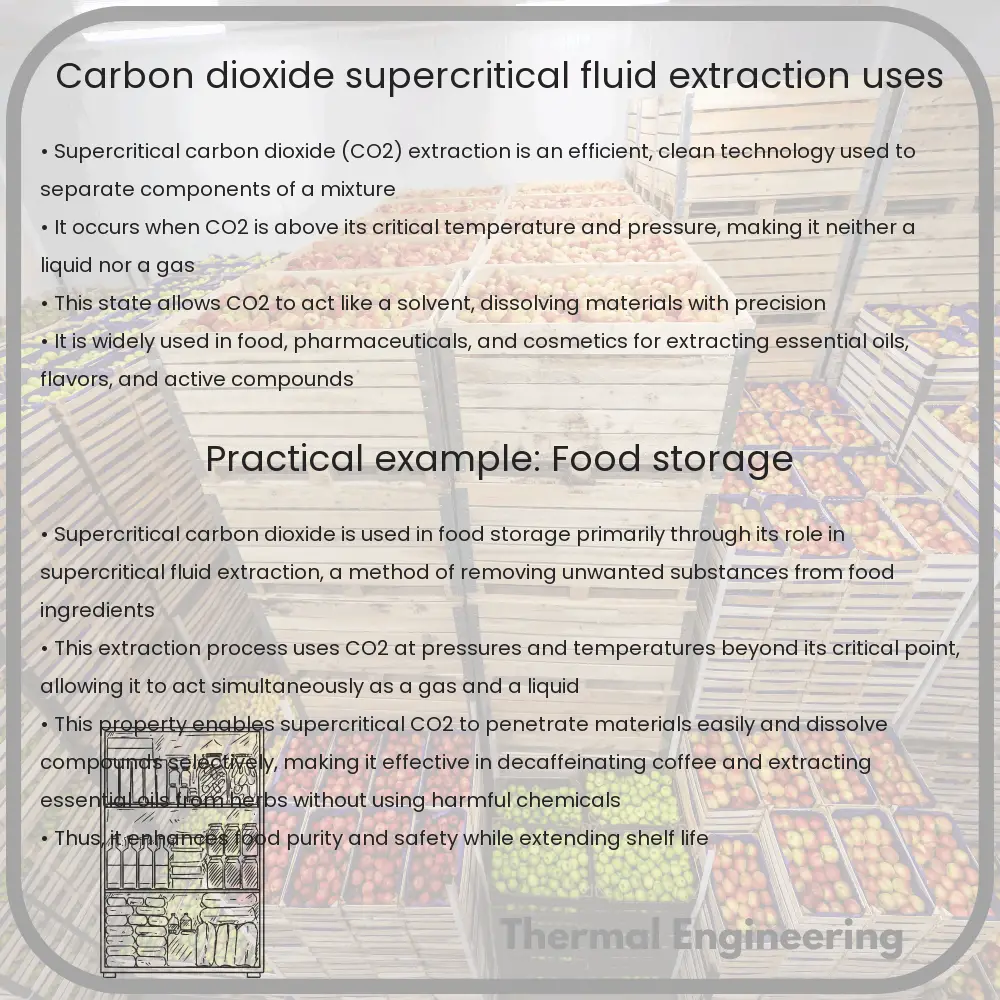Learn about Supercritical Carbon Dioxide (CO2), its properties, benefits, and applications in various industries.

Understanding Supercritical Carbon Dioxide
Supercritical Carbon Dioxide (CO2) is a state of carbon dioxide where it is held at or above its critical temperature and critical pressure. Carbon dioxide transitions into a supercritical fluid at temperatures above 31.1°C (88°F) and pressures above 73 atmospheres (1071 psi). In this state, it exhibits unique properties that are intermediate between a gas and a liquid, allowing it to diffuse through solids like a gas and dissolve materials like a liquid.
Properties and Benefits of Supercritical CO2
Supercritical CO2 is highly efficient as a solvent due to its low viscosity and high diffusivity. These properties make it highly effective for various extraction processes where selective extraction and low temperature operations are crucial. Moreover, CO2 is non-toxic, non-flammable, and environmentally benign, making it a preferred choice in industries seeking green alternatives.
Supercritical Fluid Extraction (SFE)
The process of Supercritical Fluid Extraction using CO2 primarily involves three steps:
- Extraction: The supercritical CO2 is passed through raw material to dissolve the substances of interest.
- Separation: The solution then passes through a separation unit, where the pressure is reduced or temperature is increased to precipitate the dissolved materials.
- Collection: The CO2 and the extract are separated. The CO2 can be recycled back into the system, and the extract is collected.
This method is highly favored for extracting essential oils, flavors, and other compounds from botanical materials and food products without leaving harmful residues.
Applications of Supercritical CO2 Extraction
- Food Industry: Used to decaffeinate coffee and tea, extract hops for beer flavoring, and obtain spices and flavors.
- Pharmaceuticals: Employed to extract precise active compounds from plants, and to formulate powders such as in the production of tablets.
- Cosmetics: Utilized in the extraction of fragrances and oils from flowers and seeds for use in cosmetics and perfumes.
- Environmental Science: Helps in treating environmental waste, such as removing contaminants from soil and water.
Advantages of Supercritical CO2 Extractions
Supercritical CO2 extractions offer numerous advantages over traditional solvent extraction methods:
- Eco-Friendly: CO2 is a safe and naturally occurring gas, which reduces the environmental and health risks associated with organic solvents.
- Efficiency: The ability to precisely control the solvating power through temperature and pressure adjustments allows for high selectivity and yield.
- No Residue: Unlike organic solvents, CO2 completely evaporates or can be easily removed by depressurization, leaving no toxic residues behind.
- Reuse of CO2: CO2 used in the extraction can be recycled, which minimizes waste and reduces operation costs.
In conclusion, the use of supercritical CO2 in extraction processes beyond just being a novel technique has established itself as a crucial technology across various sectors. Its implementation not only supports the extraction of high-quality products but also promotes sustainable and green engineering practices.